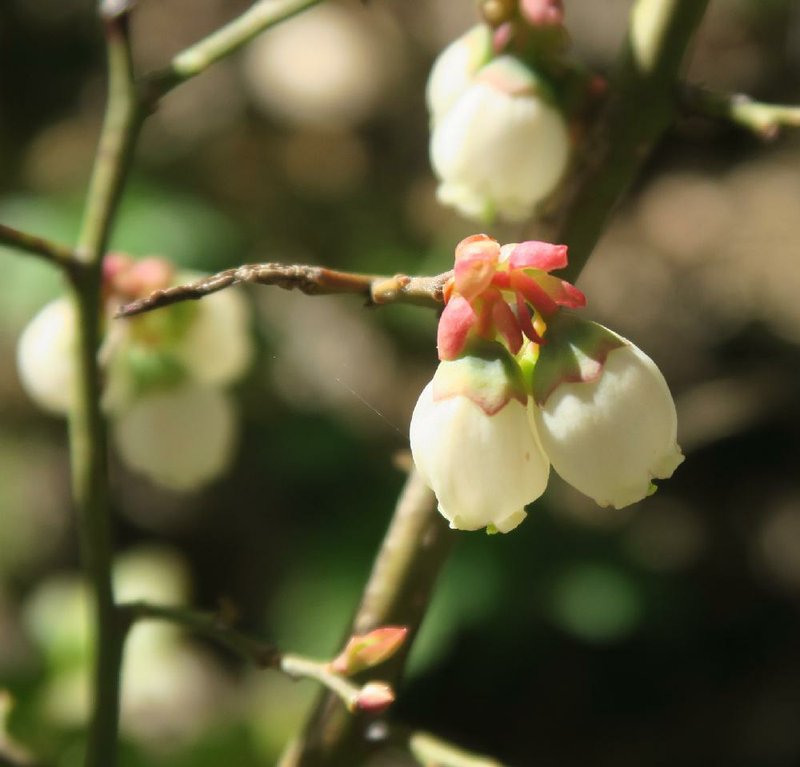MAY
We skated by pretty nicely by not having any hard freezes in April and are well on our way into the growing season. Most of the state is still two or three weeks earlier that normal on many blooms.
Unexpectedly cold weather reappeared briefly, but it seems to be gone now. It is prime gardening season, and there is plenty to do.
We have had regular but spotty rain, and it is important that you pay attention to water needs, particularly on newly planted trees, shrubs, annuals, perennials and vegetables.
Many gardeners are getting heavy returns from their vegetable gardens. Lettuce, broccoli, peas, green onions, radishes, kale and Swiss chard are all readily available.
As you harvest and create space in the garden, replant with warm-season vegetables. Tomatoes, peppers, eggplant and squash can all be planted.
Watermelon and cantaloupe plants take up a lot of space, so consider trellising them to control the spread.
Southern peas and okra can be planted as the weather warms up.
Mulch and control weeds, fertilize and water, and monitor for pests. We have already seen quite a few aphids and spider mites this season.
If you haven’t pulled your pansies and violas yet, start making room for summer color. There are many plants to choose from. Nurseries are getting in new ones daily, so visit often to see what is available.
Annual flowers and tropical flowering plants do best when fed regularly. Speaking of tropicals, try some of the new varieties of mandevilla. While the normal pink and red varieties are great, there are some new pale apricot, and red and white striped varieties.
They will bloom all summer. Hibiscus, bougainvillea and ixora give plenty of blooms. Your garden can be alive with color all summer.
Lawns are greening up, and winter weeds are dying. Once your lawn is totally green, fertilize it for the year. Keep it mowed regularly. The thicker the turf, the fewer problems you will have with weeds.
The cool, wet weather at the end of April has caused some thick, fleshy leaves on azaleas and camellias. This is called leaf gall. The thick, waxy growth can look awful but is really more a nuisance. Snap off the thickened foliage and dispose of it. Once warm weather appears, the disease will stop, but the remaining growths can re-infest the plants next season.
We usually begin to see more insects and diseases in May. Lacebugs begin feeding on azaleas, whiteflies on gardenias and bagworms begin to feast on junipers and other plants in the landscape.
Last year we had quite a few reports of bagworm activity — that insect that constructs a sack from the plant it is feeding on. The sack protects the crawling larvae from predators and insecticides, so the key is to catch them as they begin the sack. If you had a bad case of them last season, consider a preventive spray starting soon. Normally we say to spray in mid-May and once a week until mid-June, but they could start earlier, given our unusual weather. An organic approach is to spray with Bacillus thuringiensis (BT).
Even though many of our spring-blooming shrubs played out a month ago, there is still time to prune them if they need it. While timing is important, so is how you prune. Thin out cane growers and selectively thin branches on other shrubs. Shearing plants into round “meatballs” causes all the blooms and new growth to be on the edge of the plants. What height do you want them to be when they finish growing this season? If you prune to the expected height, you aren’t leaving any room for growth, so compensate. The sooner after flowering you prune the better, but make sure it is done before mid-June. This gives the plant time to recover before hot weather hits, and hopefully it will produce more blooms next spring. Fertilize after pruning. Typically one application of fertilizer per year on trees and shrubs is all that is needed.
BLUEBERRIES
Several types of blueberries are grown in Arkansas. The northern counties grow northern highbush blueberries, and rabbiteyes are grown in the central and southern areas. There are also southern highbush varieties that grow well in central and southern Arkansas.
The first to ripen are the early varieties of northern highbush, and the last to ripen are the late rabbiteyes.
All produce well when planted in the right spot with a minimum of eight hours of sunlight. Blueberries like an acidic, high-organic-matter soil that is well drained. They are not drought tolerant, so have an irrigation plan when you plant.
The University of Arkansas Division of Agriculture has released (with North Carolina State University) “Ozarkblue” and “Summit” southern highbush varieties. For northern highbush the recommended varieties are “Bluecrop,” “Bluejay,” “Blueray,” “Duke” and “Elliot.” For rabbiteye varieties plant “Brightwell,” “Climax,” “Tifblue” and “Premier.”
All of the above need at least two different varieties for cross-pollination.
A few newer introductions that are self-fruitful include “Bountiful Blue” and “Sunshine Blue.” They are more compact, almost shrub-like plants and are semi-evergreen in most of Arkansas.
“Pink Lemonade” is another self-fruitful variety. While not as prolific a producer as the other two, it produces pink fruit at maturity. While they are self-fruitful, best production will occur when you have two different varieties.
